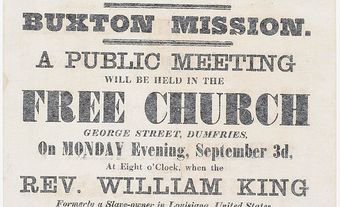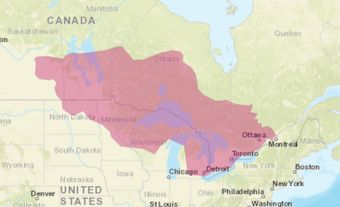Amherstburg, Ontario, incorporated as a town in 1878, population 21,936 (2016 census), 21,556 (2011 census). The town of Amherstburg is located on the Detroit River near Lake Erie. It is located on the traditional territory of the Three Fires Confederacy, which includes Ojibwe, Odawa and Potawatomi peoples (see also Anishinaabe). The land is covered by Treaty 35. During the 1850s, Amherstburg was a principal terminus of the Underground Railroad.
Indigenous Peoples
At the time of European settlement, First Nations living in the Amherstburg area were the Three Fires Confederacy (Ojibwe, Odawa and Potawatomi peoples), the Huron-Wendat and the Wyandot. To open the area between lakes Erie and St. Clair to settlement, the British colonial government asked an Indian agent at Detroit, Alexander McKee, to negotiate a treaty. The treaty, known as the McKee Purchase, or Treaty No. 2, was signed in 1790. The Chippewa (Ojibwe), Odawa, Potawatomi and Huron-Wendat signatories surrendered the majority of the land in the southwestern tip of what is now Ontario. However, two tracts of land were left out of the McKee Purchase. One, known as the Huron Reserve, was located at the present-day towns of Amherstburg and LaSalle. In 1833, the Wyandot living at the Huron Reserve surrendered their land through Treaty 35.
Settlement
In 1796, the British established Fort Amherstburg and Loyalist refugees laid out a townsite then known as Malden. General Isaac Brock used the fort as a base to capture Detroit during the War of 1812. However, the fort was under American occupation from 1813 to 1815. Between 1837 and 1838, the fort was attacked four times by rebel supporters of William Lyon Mackenzie. It was also bombarded by the schooner Anne, which later ran aground and was captured. The British garrison remained until 1851. By the late 1830s, the fort and the town were known by each other’s names, Fort Malden and Amherstburg.
Underground Railroad

People take part in an Emancipation Day parade in Amherstburg, Ontario, in 1894. Emancipation Day marks the abolition of enslavement in most British colonies on 1 August 1834.
In 1855, the estimated population of Black people in Amherstburg was between 400 and 500. By 1860, this population had increased to approximately 800 out of a total of 2,000, accounting for 40 per cent of the town’s residents. The increase in Black residents was largely due to Amherstburg’s role in the Underground Railroad. American abolitionist Levi Coffin referred to Amherstburg as “the great landing place, the principal terminus of the underground railroad of the west.” It is estimated that, after 1850, 30 African Americans arrived in Amherstburg per day via steam boat and the Detroit River.
Economy and Cultural Life
Today, secondary industries in the town include plastic manufacturing and whiskey distilling. At Fort Malden National Historic Site (designated in 1921), original earthworks, stone buildings and a blockhouse have been restored. Christ Church and Belle Vue, a beautiful Georgian mansion, were both completed in 1819.
The fieldstone Nazrey African Methodist Episcopal Church (1848) is another national historic site in Amherstburg. Designated a historic site in 1999, the church is the centerpiece of the North American Black Historical Museum. The museum tells the story of Amherstburg’s role as a terminus of the Underground Railroad and the town’s Black heritage. A community museum is housed in Park House, built in the 1790s in Detroit and moved from that community after it was ceded to the United States.

 Share on Facebook
Share on Facebook Share on X
Share on X Share by Email
Share by Email Share on Google Classroom
Share on Google Classroom



